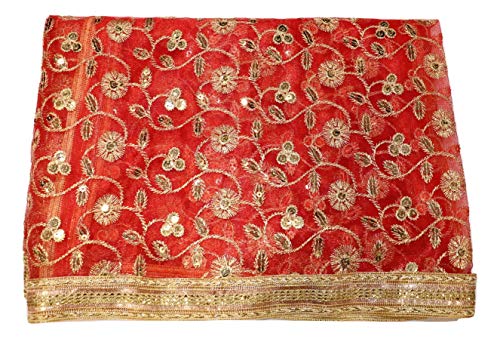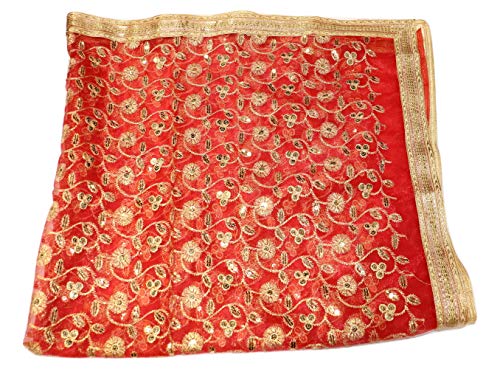JR
Shipping Price - Flat 10A$ Charges or Get Free Shipping on order above 80A$ with minimum 3 Qty.
Offering the Chunri to Devi or Goddess or any deity is a age old tradition which signifies respect towards the deities. Chunri is also laid down before installing a deity idol. The Chunri is laid on a pedestal and then the deity idol is installed on top of it. Covering the top part of the Goddess statue and photo is also a widely practiced tradition Chunri with traditional Bandhani work done. Bandhani is a type of tie-dye practiced mainly in the states of Rajasthan and Gujarat India. The term bandhani is derived from the Sanskrit word 'banda' meaning 'to tie'. The art of Bandhani is highly skilled process. The technique involves dyeing a fabric which is tied tightly with a thread at several pointsthus producing a variety of patterns like dots squares waves and strips Chunri is an integral part of festivities. It is draped on head and shoulders like a scarf by women during religious functions ceremonies and prayer rituals. It is draped around deity Idols and altars and thus made from auspicious colors. Often a chunri is used in altar as a seat for Idols and yantras and for adding color and festivity to the prayer room.
Country of Origin:
India
Item Dimensions LxWxH:
30.5 x 50.8 x 30.5 Centimeters
Capacity:
Red
Generic Name:
Puja Chunri
Primary material:
Polystere
Item Shape:
Rectangular
Brand:
Festive Vibes
Vizokhoto
Sri S.













